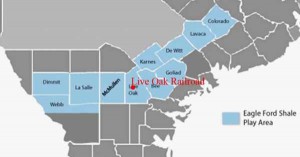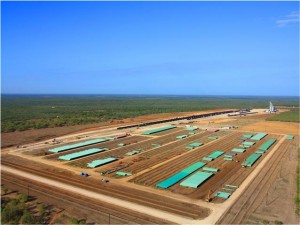Every year, an unfortunate number of trucking accidents occur at Texas railway crossings. Last year, a truck became stuck in ice while crossing railroad tracks and in another incident a freight train hit an 18-wheeler. Fortunately the vehicle drivers were not injured, but that wasn’t the case in a third railroad crossing accident which ended in a fatality. A man reportedly drove around a crossing gate and was hit by an oncoming passenger train. Many railroad crossing accidents occur in rural areas traveled to and from the oilfield.
Operation Lifesaver is a nationwide, non-profit public information program dedicated to reducing collisions, injuries and fatalities at highway-rail crossings and on railroad property.
Union Pacific launched an outdoor billboard campaign aimed at getting South Texas truck drivers to use railroad crossings safely. Reaching an estimated 1.3 million drivers between San Antonio and Laredo, the bilingual campaign pairs a visual of an 18-wheeler stopped or stuck on railroad tracks with simple phrases, such as, "Always expect a train" and “About Every 3 Hours, a Person or Vehicle is Hit by A Train.”
"Union Pacific is raising the rail safety message to remind professional truck drivers of their responsibility to cross the tracks safely," said Danny Valdez, Webb County judge. “The billboards will also reach the general public, which will make our community even safer."
Always expect a train because freight trains don’t travel at fixed times, and schedules for passenger trains can change.
Truck Accidents are Preventable
Follow the Rules. These accidents are preventable, with a little education and a little awareness. Abiding by railroad grade crossing regulations is a good place to start.
A driver approaching a railroad crossing must stop not closer than 15 feet or farther than 50 feet from the nearest rail under the following conditions:
- a clearly visible railroad signal warns of the approach of a railroad train;
- a crossing gate is lowered, or a flagger warns of an approach;
- a railroad engine approaching within approximately 1,500 feet of the highway crossing emits a signal audible from that distance and the engine is an immediate hazard because of its speed or proximity to the crossing;
- an approaching railroad train is plainly visible and is in hazardous proximity to the crossing; or
- the driver is required to stop by a traffic-control device or signal. A driver must remain stopped until permitted to proceed and it is safe to proceed.
The driver of a vehicle who approaches a railroad crossing equipped with railroad crossbuck signs without automatic, electric, or mechanical signal devices, crossing gates, or a flagger warning of the approach or passage of a train must yield the right-of-way to a train in hazardous proximity to the crossing, and proceed at a speed that is reasonable for the existing conditions. If required for safety, the driver must stop at a clearly marked stop line before the grade crossing or, if no stop line exists, not closer than 15 feet or farther than 50 feet from the nearest rail.
Helpful Tips Regarding Railroads
Always expect a train because freight trains don’t travel at fixed times, and schedules for passenger trains can change.
- Trains are no more able to stop on a dime than tractor-trailers
- Trains can move in either direction, backwards as well as forwards, at any time
- An approaching train is closer and moving faster than you might think
- Stay alert around railroad tracks. Don’t text or wear headphones. Minimize distractions that could prevent you from hearing an approaching train. Be aware that today’s trains are quieter than ever, and may not make a “clickety clack” sound.
Find more helpful safety tips, including what to do if you do get stalled on the tracks, at the Operation Lifesaver Website





